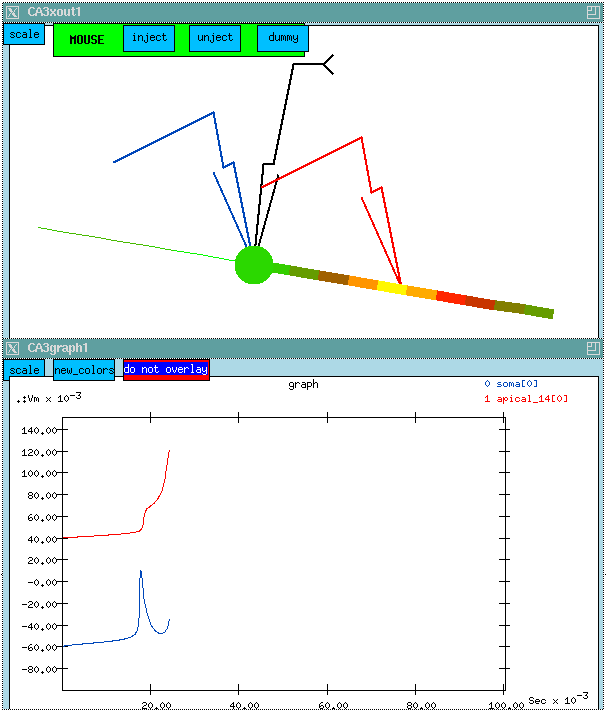
The Traub91 tutorial uses Neurokit to recreate the Traub, et al. (1991) multi-compartmental CA3 pyramidal cell model, in order to investigate other mechanisms for producing burst firing. The use of this tutorial and the background for understanding it is provided in Chapter 7 of The Book of GENESIS.
This model has 19 compartments with a soma in the center and two linear chains of compartments to represent the apical dendrites and the basal dendrites. Like the molluscan burster, this cell has fast sodium, delayed potassium, transient potassium, high-threshold calcium, and calcium-activated (C-current) potassium conductances. In addition, it has a slow potassium current (the AHP current) which depends only on the Ca2+ concentration. As with the molluscan burster, the burst is terminated when the Ca2+ concentration builds up to the point that the calcium-dependent potassium currents are able to hyperpolarize the cell. However, the burst is maintained, not by a slow inward B-current, but by an interesting interaction of events in the soma and the dendrites.
The figure below shows part of the Neurokit display for the Traub91 tutorial. The cell diagram at the top shows a current injection electrode in the soma, and recording electrodes in the soma and an apical dendrite compartment. This snapshot, using bright colors to represent regions of high membrane potential, shows how action potentials in the soma (lower plot) initiate broad Ca action potentials in the intermediate dendrite regions (upper plot).

Although there are no sodium channels in the middle and distal dendrites, the concentration of calcium channels is much higher than in the soma. These have a high activation threshold and a long time constant, so that broad action potentials may be triggered in the dendrites by passive propagation of soma action potentials. In turn, the calcium action potentials propagate back to the soma to maintain the depolarization and maintain the burst until it is quenched by the increasing C and AHP currents. The tutorial allows one to examine this process in detail, by injecting recording electrodes in the soma and dendrites, while injecting current to the soma.